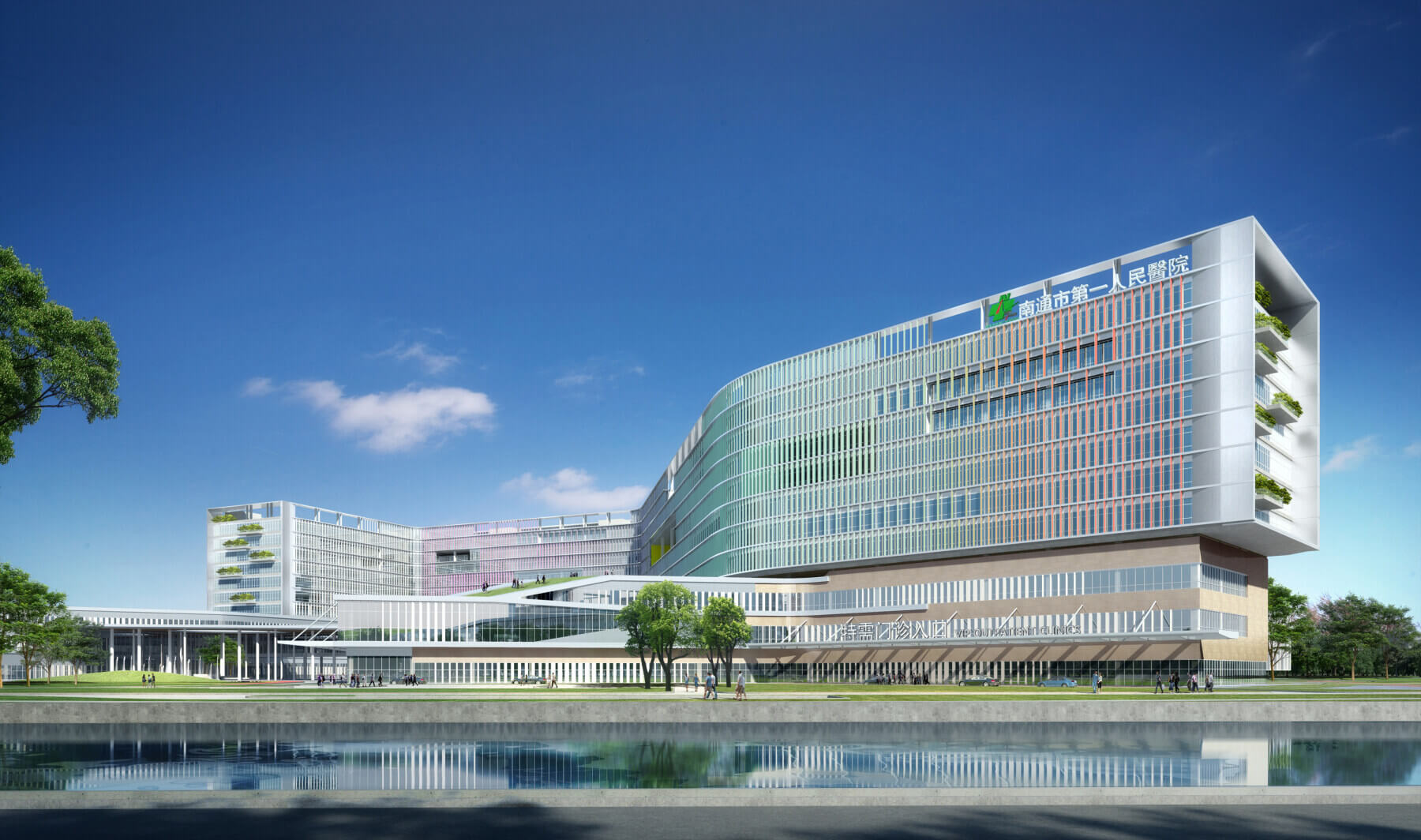Gresham Smith’s winning design for the 4.5 million-square-foot, 2,600-bed general hospital focused on delivering an environmentally conscious, operationally efficient and modern facility that provides high-quality care and patient satisfaction. The staff/research space is placed between the inpatient towers to allow researchers, clinicians and caregivers to collaborate as well as to minimize travel distance to patient care units. The bed towers will connect horizontally on every floor to research/education spaces and sit atop the diagnostic/treatment podium for efficient vertical circulation.
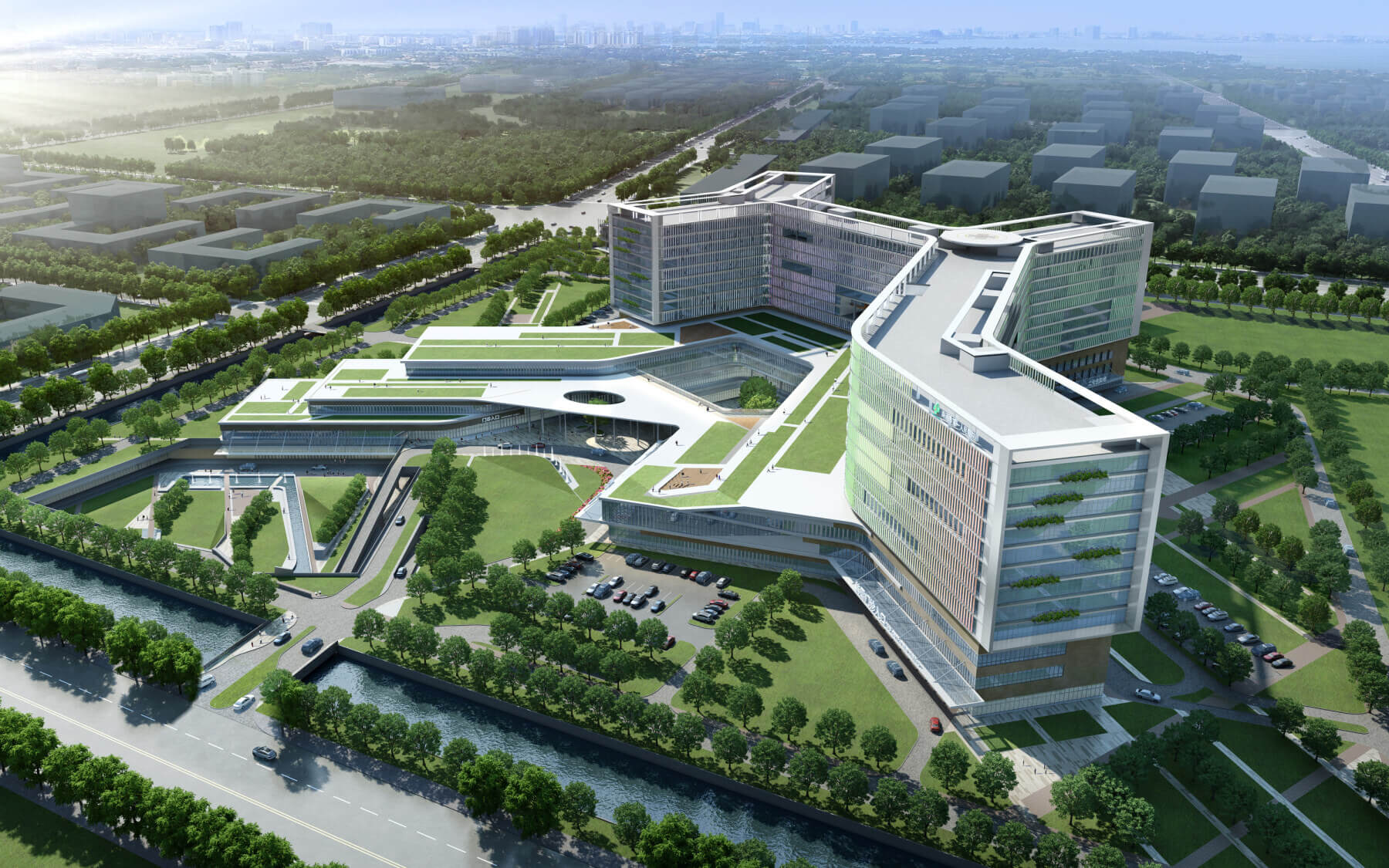
The connected inpatient towers will surround the hospital’s beautifully landscaped central courtyard area while the orientation of the hospital allows the majority of patient rooms to face south to meet China’s building code. Designed with sustainability in mind, the extensive tiered podium green roofs feature roof gardens and walking trails and provide views of nature to those in the bed towers. The inpatient tower’s facade is inspired by Nantong’s rich tradition of textile design and features a color-coated metal sun shade.
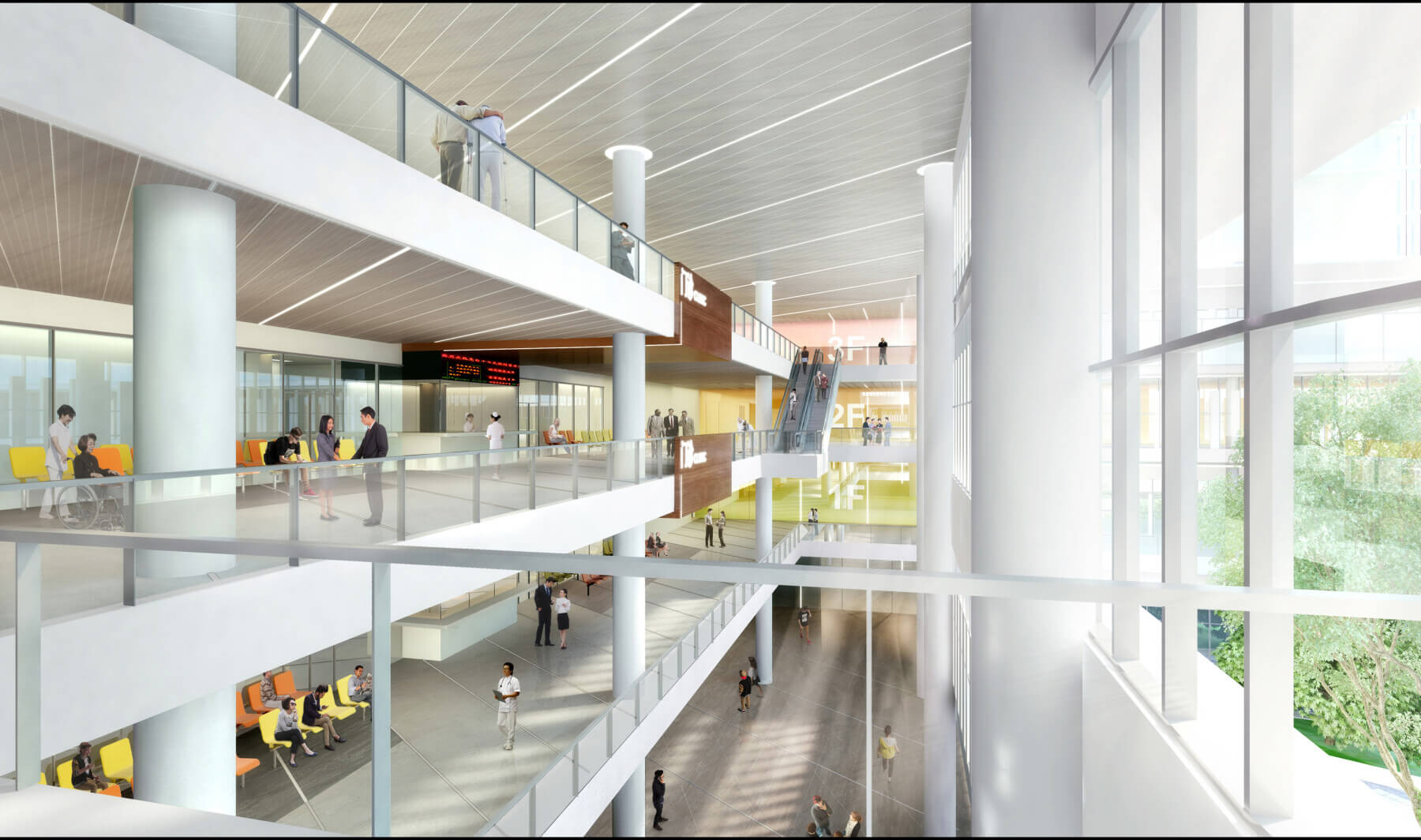
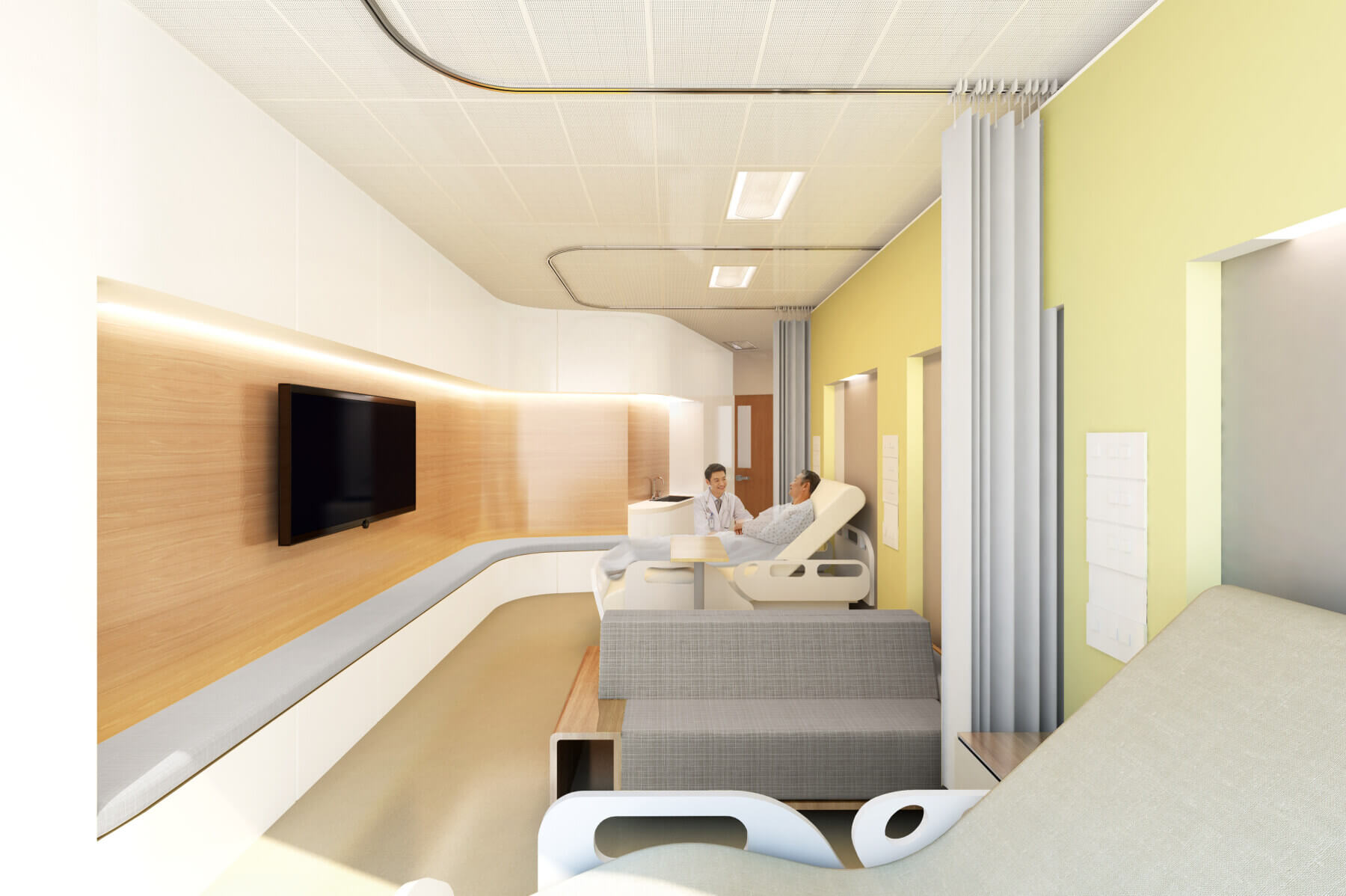
The hospital’s inpatient units were designed for patient safety to reduce the risk of falls and hospital acquired infections. The units were also designed for acuity adaptability to accommodate the various types of specialties and to allow the number of beds to flex based on demand. Semi-private patient rooms can be converted into three-bed wards in the event of emergency situations. Decentralized nurse stations will place staff closer to patients, reducing steps and increasing patient-care time.
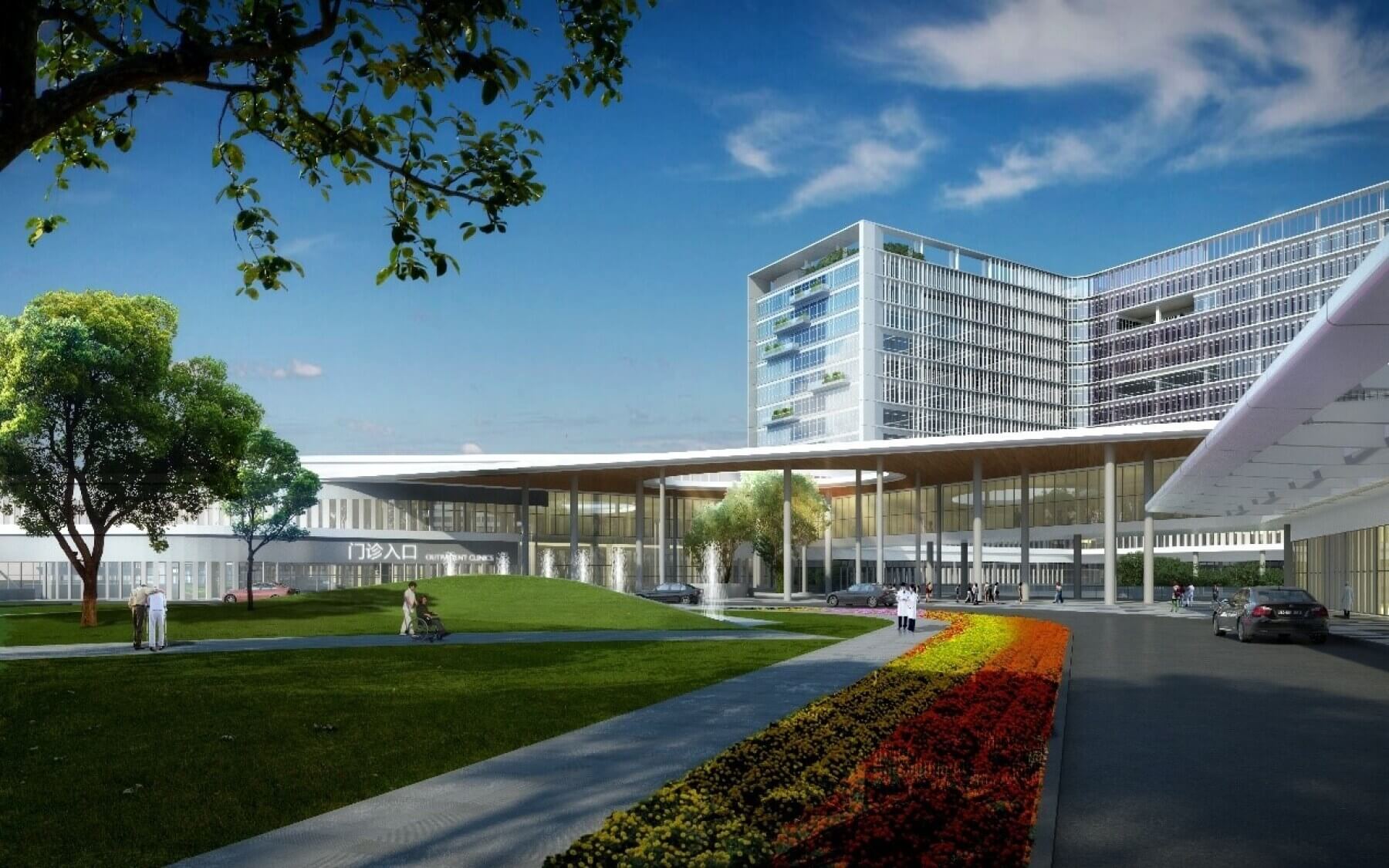
The hospital’s circulation patterns are complex and yet efficient. To protect patient privacy and dignity, public circulation is carefully separated from inpatient and staff space. The building massing opens up toward the main entrance to facilitate clear and intuitive wayfinding for visitors and patients alike. Public amenities, including the cafeteria, retail and pharmacy are located on the basement level, also situated around the courtyard to extend natural light and views to this level.
